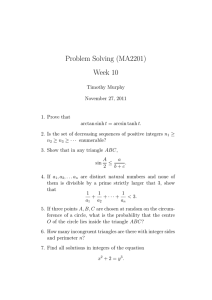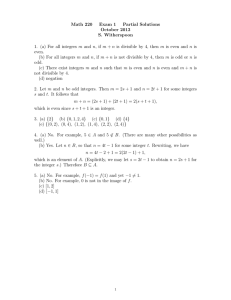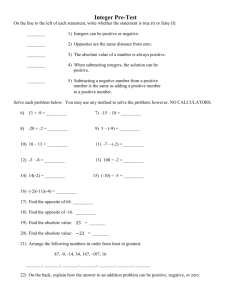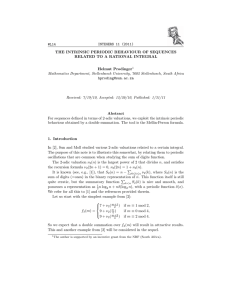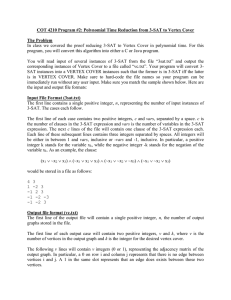Problem Solving (MA2201) Week 2
advertisement
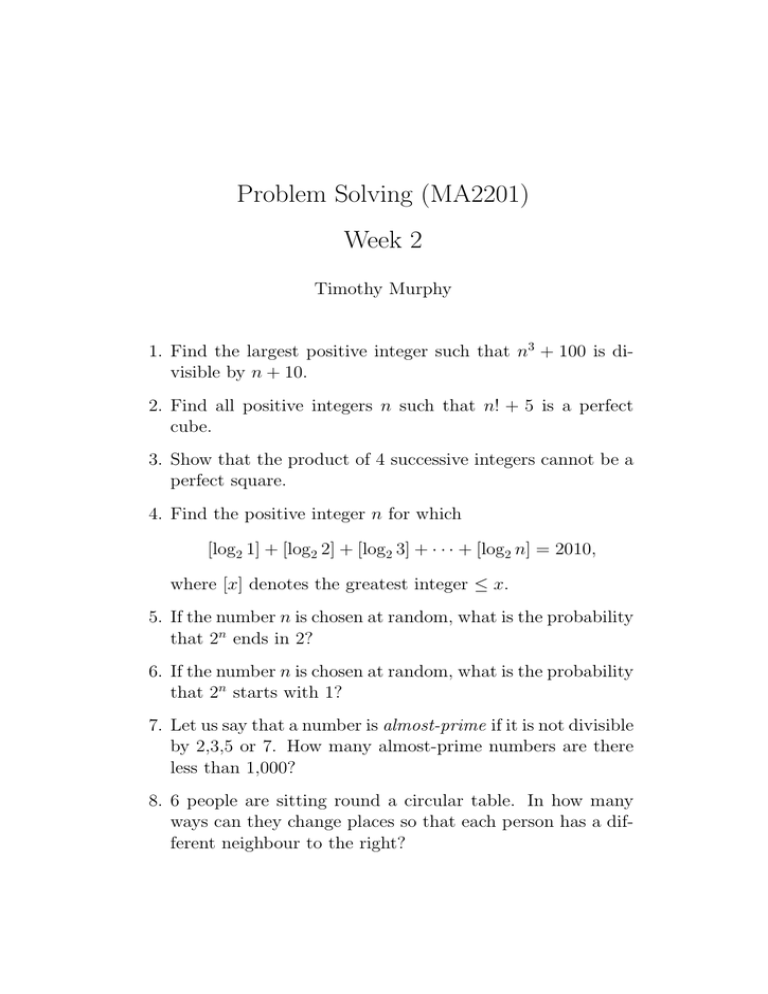
Problem Solving (MA2201) Week 2 Timothy Murphy 1. Find the largest positive integer such that n3 + 100 is divisible by n + 10. 2. Find all positive integers n such that n! + 5 is a perfect cube. 3. Show that the product of 4 successive integers cannot be a perfect square. 4. Find the positive integer n for which [log2 1] + [log2 2] + [log2 3] + · · · + [log2 n] = 2010, where [x] denotes the greatest integer ≤ x. 5. If the number n is chosen at random, what is the probability that 2n ends in 2? 6. If the number n is chosen at random, what is the probability that 2n starts with 1? 7. Let us say that a number is almost-prime if it is not divisible by 2,3,5 or 7. How many almost-prime numbers are there less than 1,000? 8. 6 people are sitting round a circular table. In how many ways can they change places so that each person has a different neighbour to the right? 9. If a set of circles is placed in the plane so that no circle in the set lies inside another one, does it follow that the set is enumerable? 10. Can you find integers x, y, z, not all zero, such that x3 + 2y 3 + 4z 3 = 0? 11. What point P in a triangle ABC minimises AP 2 + BP 2 + CP 2 ? 12. Show that in a group of 6 people there are either 3 people who know each other (“Mututal acquaintances”) or 3 people who don’t know each other (“Mutual strangers”) 13. Show that the complex numbers x, y, z form an equilateral triangle if and only if x2 + y 2 + z 2 = xy + yz + zx. 14. Show that in any graph with at least 2 vertices there must be 2 vertices with the same degree. (The degree of a vertex is the number of edges with an end-point at that vertex.) 15. Show that for any k > 2 one can find k integers 0 < a1 < a2 < · · · < ak such that 1 1 1 + + ··· = 1. a1 a2 ak Challenge Problem Do there exist primes p, q such that p | q(q − 1) + 1 and q | p(p − 1) + 1?
